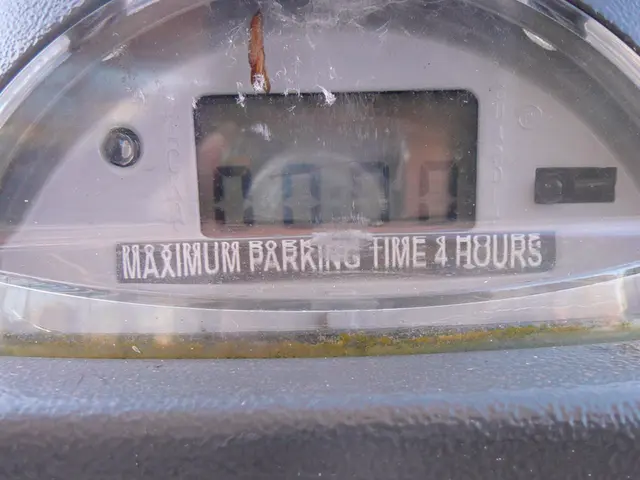Crafting a Calming Box for Home or Classroom
Creating a Soothing Box for Children or Pupils: A Guide
Creating a calming box is a practical and easy strategy to facilitate self-soothing for children. This collection of items can be conveniently stored in a box or container and serves as a toolbox for accessing items that aid in calming down.
What is a Calming Box?
Often referred to as a calm-down box, stress relief kit, or coping skills toolbox, a calming box is a collection of self-regulation items stored in a box or other container. The advantage of having a calm-down kit toolbox is that it enables easy access to items that support kids' calm-down strategies.
When to Use the Calming Box
This versatile tool can be beneficial in various situations, such as:1. Overwhelming feelings2. Distressing moments3. Anger or frustration4. Anxiety5. Bedtime routine6. Sensory breaks
Contents of a Calming Box
The contents of a calming box depend on individual needs, but the following suggestions might provide inspiration:
Calm Down Strategy Cards
Visual cues can aid in choosing effective calming strategies. Printed cards in booklet or card format are easier to carry around.
Books
Books can distract children from negative feelings. Some popular choices for dealing with anger, anxiety, and confusion include: "What to Do When Your Temper Flares," "Everybody Feels Angry!," "Wilma Jean the Worry Machine," and "The Anxiety Workbook for Kids."
Sensory Bottles
Sensory bottles or calming jars are effective calming tools. These containers, filled with a liquid solution and different materials, provide a visually soothing and pleasant experience for a child's senses.
Favorite Soft Toys
Cuddling a favorite soft toy can help with self-regulation. Combine this with deep breathing exercises: "breathe in/hug tight / breathe out-relax" repeated several times.
Fidgeting Toys
Some kids enjoy fidgeting with little toys, which can help take their minds off troublesome feelings. Fidget spinners, fidget cubes, sensory rings, or other fidgeting toys can be beneficial, particularly for children with attention deficit hyperactivity disorder (ADHD).
Problem-solving Worksheets
If a problem can be solved, a problem-solving worksheet might prove helpful. This resource aids in finding solutions to issues that might be causing strong emotions.
Stress Balls
Stress balls help in relieving tension and strengthening muscles. Crafting homemade stress balls from materials like flour, water beads, rice, or lentils can be a fun DIY activity.
Music
Music can help soothe tension. Amazon Music Unlimited offers a 30-day free trial.
Noise-canceling Headphones
Loud noises in a classroom can disrupt concentration and cause stress. Noise-canceling headphones can help cope with these circumstances.
Positive Affirmations Cards
Positive affirmations are statements that motivate or challenge negative thoughts. Affirmation cards can help children learn about positive affirmations and practice them effectively.
Emotions Charts
Emotions charts are visual resources that help kids label and express their feelings. Learning about emotions charts and downloading a free emotion chart can help track your child's feelings.
A Journal
A journal provides an outlet for kids to express their feelings through writing. The Cool Kid Journal and the Confidence Journal are examples of journals for anger management and confidence building.
A Drawing Notebook
Some kids might find it hard to put their feelings into words but can draw their emotions instead.
A Worry Eater
A worry eater, like the pictured character, can help take away problems written on a piece of paper.
Happy Thoughts Scrapbook
A scrapbook filled with happy memories and favorite places can help change negative thoughts into positive ones.
A Bag of Cookies
A treat like cookies might be just what's needed to lift moods.
A Weighted Blanket
A weighted blanket can provide comfort and relaxation.
A Weighted Stuffed Animal
The weighted stuffed puppy, designed for children with sensory processing disorders, can help with calming down, maintaining focus, improving sleep, and reducing stress.
Don't Forget!
Personalize the contents of the calming box based on individual needs, as children's preferences may vary from older kids and adults. Adults might find essential oils or scented candles more appealing.
Ideas for a Calm-Down Corner
If space allows, consider creating a calm-down corner, an area with quieter settings, softer lighting, and calming decor for kids to withdraw when overwhelmed. In addition to the box, this space can include larger items like a bean bag, bouncing ball, indoor swing, or enclosed space like a teepee tent.
Other Calming Ideas for Kids
Additional calming strategies include:- 60 Calming Strategies for Kids- 40 Sensory Activities for Kids
- Incorporating calming box items into a parent's lifestyle may help in managing their child's ADHD symptoms.
- A pet's calming presence could also be an effective addition to a child's calm-down box, offering comfort and unconditional love.
- During family travel, a calming box can provide valuable support for children, helping them cope with the unfamiliar environments and stresses.
- While shopping for clothing and accessories, opting for a fashion-and-beauty store with a calming ambiance could help reduce sensory overload for kids with ADHD.
- A calm-down corner could be useful not only at home or school but also during a special event, like a birthday party or a wedding, to help children manage their emotions and sensory input effectively.








